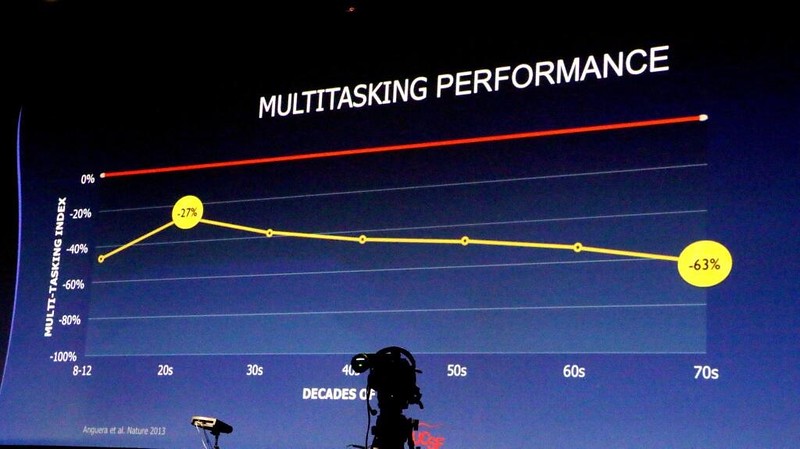You probably heard multi-tasking is not efficient, because you divide your attention. Switching between tasks (which is usually what we mean with multi-tasking, rather than literal "doing X while doing Y") doesn't allow your brain the time to get into the zone. That takes time, and you can't switch tasks without paying a serious price: the quality of your thinking drops, your sentences wander off into the grammar graveyard, and you spend more time cleaning up the mess than you gained by trying to do everything at the same time.
But I recently noticed two situations that allow me to switch tasks effortlessly, or even multi-task, and upon reflection, I think you may get away with it, too!
What doesn't work
I noticed this when I lost my ability to switch easily from one task to another: after drafting an email, I couldn't just hop into the chapter I was writing. Or after I was done tidying up footnotes in an academic article, I procrastinated on starting that job application letter. What was wrong with me? I used to hop from email drafts to website management to feedback and grading, into translation, all in a single morning without breaking a sweat.
Then it hit me. All of those tasks I used to perform were routine and belonged to a single domain: the academic world. I wasn't crafting letters for job applications for a media comms position with an NGO, I was responding to a request from a colleague. I wasn't emailing a network connection to enquire about an upcoming job opportunity, I was drafting a note to my students about the upcoming week's assignments. And even when the research and writing were tough, I knew where to find the sources about seventh-century East Asia, because I'd been there the day before. (Write. Every. Day. It works.)
Now I'm switching between two very different domains: one is the job hunter's, who's crafting a new identity as a writer and there is nothing routine about that yet. The other domain is the academic who was still finishing up a commissioned chapter and has a book manuscript that she is determined to finish, and while that is my comfort zone, I can't spend all my time there.
What works: two tips
Tip 1: stay in the same domain
Look at your different tasks, assign them to a domain or role, and if you want to switch to something else, switch to something in the same domain. For example, I started writing this blog post when I wanted to write, but couldn't focus on seventh-century East Asia after a call about a job opportunity. But writing this is still more productive than checking out cute cats on Instagram while I transition to my academic domain.
Tip 2: multi-task with tasks that do not tax your brain
If you want to try switching between designing a research plan for curing cancer, writing your bestselling YA novel, and planning the banquet for your foundation's big fundraising dinner, be my guest, but you're likely inviting trouble. You need your full attention for these tasks, and most of us only get there after about 20 minutes, or your banquet ends up with vampire-friendly food only. (So much for the anti-cancer potential of garlic, I guess.)
If you insist on multitasking, pick tasks that can or need to be broken up or need some ruminating, and combine them with routine tasks. Batching phone calls together? Get up and water the plants or feed the fish in between, and ponder your strategy how to approach your next call. Writing an email to decline a request you want to say no to? Clean out that 1 shelf in the fridge. By the time you're done, the perfect way to resolutely but politely say "No" will present itself. (Don't clean the whole fridge, keep another shelf for another email.) Take out the trash while you plan next week's menu in your mind, then jot down your list in your planner. Notice how these are small routine chores that don't take up brainpower.
Tip 3: Don't multitask.
You don't have to multi-task. In fact, I prefer it if I can stay with one task to completion. Oliver Burkeman makes a good case against multi-tasking altogether, but I haven't mastered the art of leaving the podcasts at home yet during my slow jogs.
Sometimes when you're swamped by demands on your time, the only way to create a bit of space is to slash and burn your way through your to-do list by combining tasks and hop from one to the other. Try to reintroduce multi-tasking, or task-switching to your toolkit using these tips. Use with caution, find your personal prescription, and do let me know how this works for you!
Sneak peek
If you're prone to procrastination on big tasks that fill you with dread, I may have a strategy for you coming up soon! Keep your RSS feeds pointed to this blog ("Thoughts"), or sign up for email alerts so you don't miss it!
Featured image: Don't Multitask flickr photo by keepitsurreal shared under a Creative Commons (BY-SA) license
